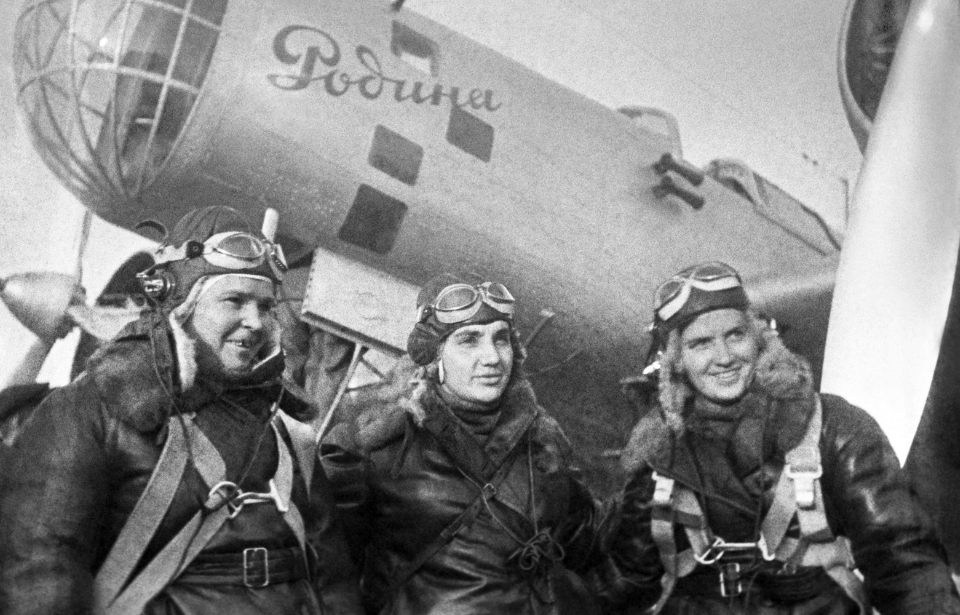Meet Marina Raskova, the brainchild behind the little-known all-female night bomber regiment during the Second World War. These ‘night witches’ were so feared that any German airman who downed one was immediately awarded an Iron Cross. Here we take a look at the short life of Marina Raskova, whose actions were integral in Soviet success during the Second World War.
Who is Marina Raskova?
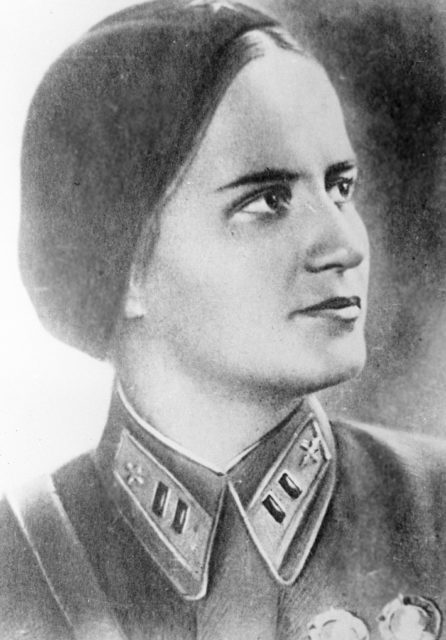
Marina Raskova (née Malinina) was born in Russia on March 28, 1912. Most Soviet airwomen were interested in aviation from an early age, but not Marina. In fact, becoming a pilot-navigator was her second career choice. She originally wanted to be an opera singer, but sadly, a bad ear infection and lack of money forced her to make a more practical decision. She quit music and began studying chemistry and engineering in high school.
In 1929, she began working at a dye factory as a chemist. There, she met engineer Sergey Raskov whom she would later marry. It wasn’t until 1931 that she became interested in aviation after working as a draftswoman in the Aero Navigation Laboratory at the Air Force Academy.
In 1933, Marina Raskova joined the Soviet Military Air Forces, Voyenno-Vozdushney Sily (VVS). In 1934, she became the first Soviet woman to qualify as an aviation navigator after graduating from the Leningrad Air Force Scientific Research Institute. That same year, Raskova also trained to become a pilot at the Moscow Air Club and became the first female pilot instructor at the Zhurouski Air Academy.
Marina Raskova became a superstar
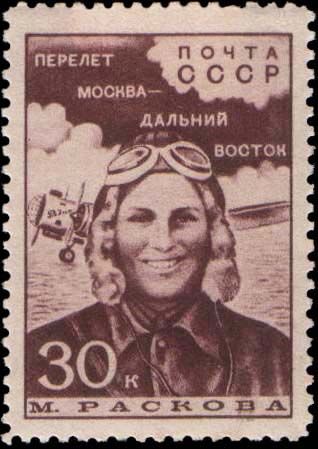
Throughout the 1930s, Marina Raskova became a superstar in the Soviet Union, often being referred to as “the Russian Amelia Earhart.” During the 1930s, Raskova set a number of long-distance records, an important achievement in the Soviet Union.
Raskova’s most famous pre-war achievement came in 1938 during a flight on the Rodina (Russian for ‘Motherland’) when she set an international distance record. Raskova was the navigator of this all-female crew, and together they set the distance record of 4,010 miles (6,450 kilometers).
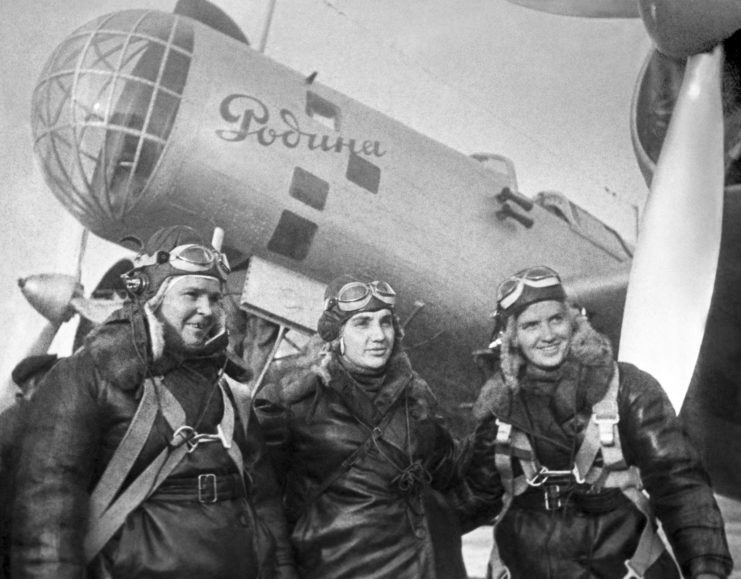
At the end of the mission, the crew had difficulty finding an airfield due to poor visibility. The navigator’s cockpit had no entrance to the rest of the plane, meaning it was very unprotected in a crash landing. Because of this, Raskova parachuted out before the crew touched down, but when she did, she forgot her emergency kit. For ten days, Raskova could not find her plane and had no food or water. After she found her plane and her crew, she was awarded the Hero of the Soviet Union award. Marina Raskova and the other women present on this flight were the first females ever to receive this award.
Marina Raskova’s record-breaking flight was celebrated all over the Soviet Union, and the mission appeared in The New York Times.
Marina Raskova’s connection to Joseph Stalin
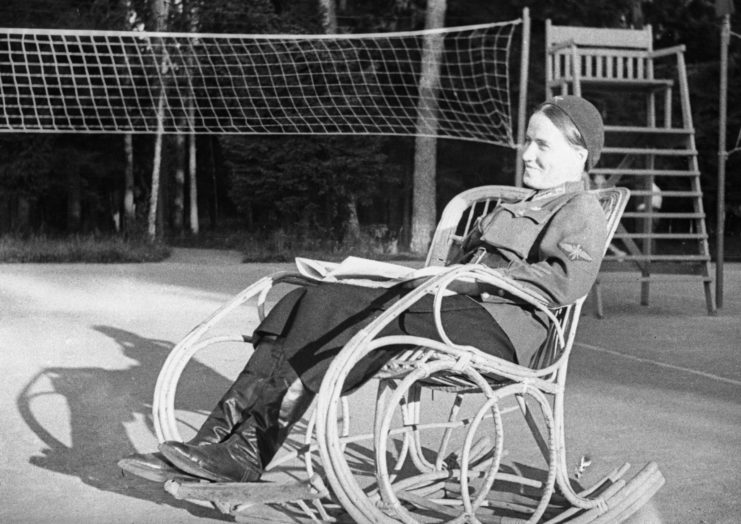
By the start of the Second World War, Marina Raskova was arguably the most famous woman in the Soviet Union. Because of her fame and skills, she began receiving letters from women all over the Soviet Union who wanted to join the Soviet war effort. Realizing her opportunity, Raskova petitioned Joseph Stalin to let her form an all-female fighting squadron.
In October 1941, Stalin ordered three all-female air force units, with Raskova in charge. These three regiments consisted of the fighter regiment, the dive bomber regiment, and the night bomber regiment. Marina decided that she would be in charge of the 588th Night Bomber Regiment, later known as the Night Witches.
The women chosen for these regiments underwent an intense training period, as they were expected to learn in a few months what it took most Soviet soldiers several years to understand.
The Night Witches
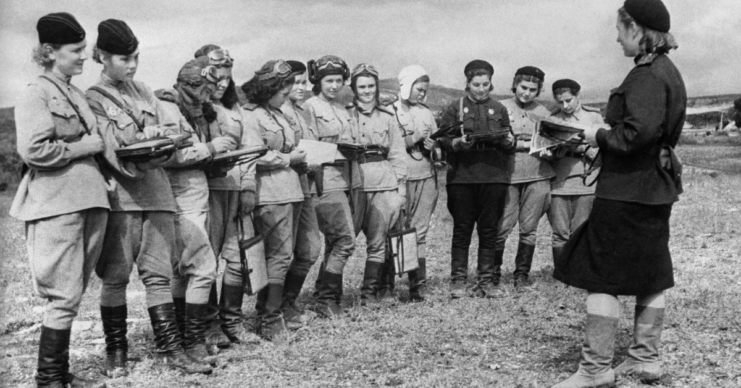
The 588th regiment became the most famous and most lethal of the three regiments Marina Raskova created. However, these women had to overcome many obstacles to solidify their spot in history. The Soviet military gave these women old uniforms previously worn by male soldiers, including boots too big for them.
The military provided the women pilots with the outdated Polikarpov Po-2 biplanes. These were two-seater, open-cockpit planes were constructed entirely out of plywood and canvas. These planes became so cold in the winter that just touching them could rip bare skin off.
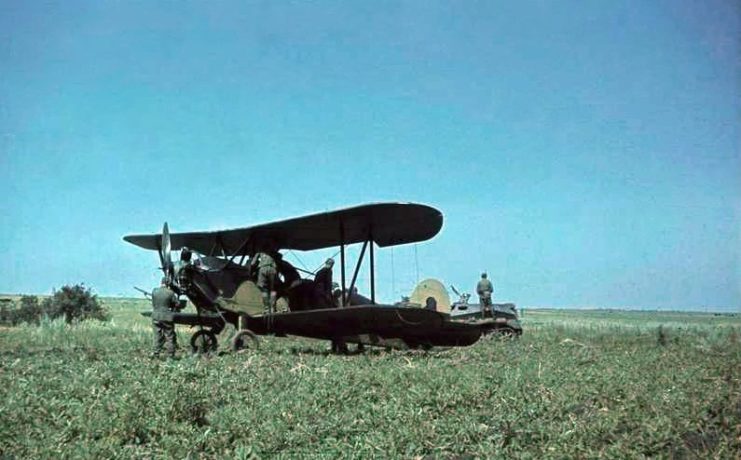
There were some advantages to these rudimentary aircraft. Because their speed was slower than the German planes, they could maneuver faster than the enemy, meaning they were difficult to target. The planes were also so small that they didn’t appear on German radar or infrared locators. Their stealth gave way to the nickname given to them by the Germans – Nachthexen, or ‘night witches,’ because their wooden planes sounded like brooms sweeping.
The Polikarpov Po-2 biplanes could only carry two bombs at a time, one under each wing. The weight of the bombs forced the crew to fly at lower altitudes, making them an easier target for the Germans, which is why they only flew at night. The regiment sent out 40 two-person crews at night, with each crew completing anywhere from eight to 18 missions a night.
Marina Raskova’s untimely death
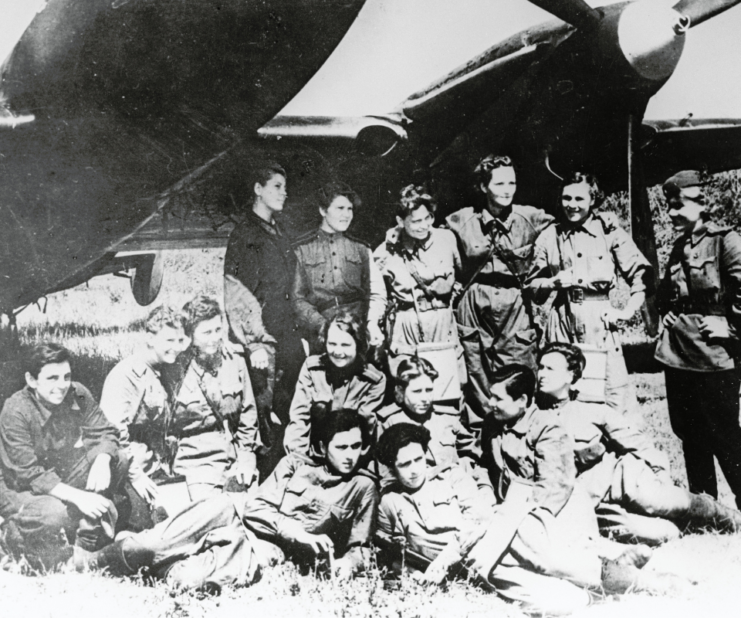
Sadly, Marina Raskova never got to see how effective her night bomber regiment would be for the entirety of the Second World War. On June 4, 1943, Raskova’s plane crashed while she was en route to the front. None of the crew survived this crash.
Marina Raskova was given a state funeral, including a Red Square ceremony with full military honors. Her ashes were interred in the wall of the Kremlin. She was posthumously awarded the Order of the Patriotic War 1st Class.
More from us: Instrument of the Famous “Night Witches” – The Versatile Soviet U2/Po-2 with Photos
The Night Witches flew in more than 30,000 missions during the Second World War. Their last flight took place on May 4, 1945 – three days before Germany officially surrendered. The Night Witches regiment disbanded six months after the end of the Second World War.
